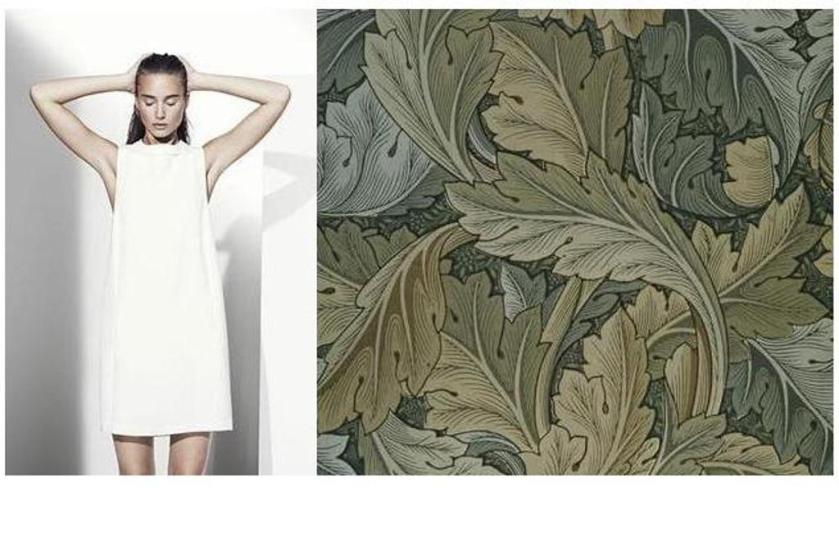Dressing a building and cladding your wife is not a way to get rid of her. It is, however, bad for your city.
What’s interesting, instead, is that the German language – the vocabulary of which is richly structured around correlation and families of meaning – has a word that applies to both architecture and fashion. A correlation that’s resurfacing in contemporary architecture.
Bekleidung refers to both the act of protecting the human body with clothes and the act of covering a building in cladding.
Similarly, the words for “Wall” and “Dress” belong to the same family.
- Wall = Wand ; Dress = Gewand
This is not only true in German:
- Italian: Abitare / Abito
- French: Habiter / Habiller
But how do the relate?
Isolation, protection, decoration, image, status, performance.
The debate on ornament is a longlasting one. Loos had a pretty clear idea about that (”Ornament and Crime”, Adolf Loos, 1908), as did Semper half a century earlier (”The Four Elements of Architecture”, Gottfried Semper, 1851).
Their ideas regarding the role and dignity of ornament in architecture were different if not opposite, yet they share a conviction that building walls and weaving textiles are not entirely unrelated actions. In fact, enclosures (walls, fences) have their origins in weaving and the most basic spacial divider is fabric.
Now, while ornament comes and goes in the architectural and fashion trends and is somtimes praised and sometimes blamed, this is as clear an indication that buildings and people require a similar kind of coating: people are dressed, buildings are clad.
The dispute on ornament is surely interesting, but ultimately unimportant. Behind the correlation between the words “wall” (wand) and “dress” (gewand) in German and some similarities in their figurative meaning, however, stands a crucial architectural dilemma: is it all about pleasing the eye?
In contemporary architecture Rem Koolhaas has often turned to the fashion industry, not just to design the buildings for Prada or to title one of his most significant books (”S, M, L, XL”, Rem Koolhaas, 1995), but also to shape his architectural way of imagining the city: a series of unappealing and undefined boxes shaped by program and dressed/covered in highly researched cladding.
In Fondazione Prada, which is almost complete and has already opened in Milan, the highly diverse buildings that make up the complex are clad in gold leaf, microperforated polycarbonate, aluminum foam, rough concrete coating.
The end product is all but unappealing or undefined, which leaves the clothes making the man, ehm building.
This is certainly good for Rem, for architecture and for our eyes; but is it good for our city?
[This article was originally published by Ilias Nissim on “An Iliasful of Architecture”]




